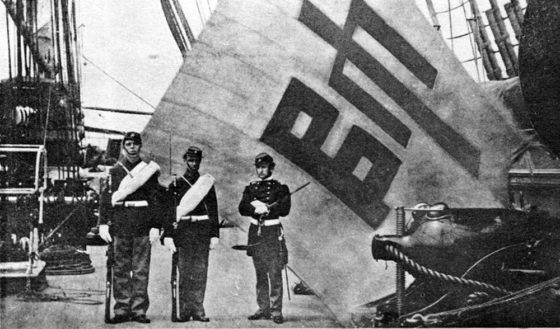
“The moniker first appeared in print in 1785, yet it clearly had been in soldierly use for a good many years before. The two explanations usually offered for its origin have proven as anachronistic as they are unsatisfactory.”
By John Danielski
THE LONG LAND Service flintlock or Land Pattern musket was the principal infantry weapon of the British army from 1722 until its displacement by the Enfield rifled musket in 1853.
The walnut-stocked, single shot smoothbore weighed 10 pounds, had a caliber of .75 inches and fired a one-ounce lead ball. The original design went through a series of modifications and varied in length from 63 to 39 inches. A remarkably sturdy weapon, it was manufactured by the millions and won fame in at least three-dozen wars fought on five continents. In fact, it’s difficult to mention engagements like Quebec, Saratoga, Assaye and Waterloo without paying tribute to its lethal presence.
History, however, remembers the musket not by its official designation but by its nickname: the “Brown Bess.” The moniker first appeared in print in 1785, yet it clearly had been in soldierly use for a good many years before. The two explanations usually offered for its origin have proven as anachronistic as they are unsatisfactory.

The first explanation suggests that the name came from an adoring England’s appellation for their greatest female ruler: Elizabeth I. The problem is that “good Queen Bess” died in 1603, long before the musket made its first appearance.
The second theory suggests that the name came from the manufacturers browning the barrels of the muskets to forestall rust. The problem with that explanation is that most of the weapons were originally finished bright: browning was generally applied later, at the regimental level.
A new explanation offered by British maritime historian Samuel Willis is much more compelling because it accounts for the psychology of the average soldier and the rudiments of drill that were pounded into him.
In the early 1700s, “brown bess” was a pejorative term for prostitutes. In an era in which ‘proper ladies’ were celebrated for their pale complexions, women who made their livings in the streets invariably became suntanned.

Daniel Defoe used “brown bess” in his 1724 novel Roxanna: The Fortunate Mistress. Sex trade workers were a common sight on London streets of the 18th century. Popular narratives cast many of these women as unsophisticated country girls or household servants who were seduced by false promises of honey-tongued gentlemen only to be later discarded. One Quaker mandarin argued that London in 1801 contained at least 30,000 such specimens. Such a down-on-her-luck woman was exactly the sort of erstwhile angel whose favors could be purchased by a soldier with time to kill and a few pence to spare. Dark alleys for a quick assignation were readily available.
Then there were the 18th and 19th century British drill sergeants who taught a recruit to hold their muskets dear; to treat them like lovers or valued mistresses. And amid the loneliness of barracks life for young men in uniform, sexual slang certainly dominated the day-to-day nomenclature.
The probable explanation of the Brown Bess nickname reflects an association that is both old and sad: sex and violence; the two seem indelibly linked. While the severing of the bonds between the two is, as Shakespeare counseled,“ a consummation devoutly to be wished,” that outcome is not likely to happen any time soon.
We may change politics, we may even change sensibilities, but the flawed basics of human nature are as enduring as the timeless rocks of the Grand Canyon.
 ABOUT THE AUTHOR: John Danielski is the author of the Tom Pennywhistle series of novels about a Royal Marine officer in the Napoleonic Wars. Book six, Bombproofed, has just been released. Book five of the series, Bellerophon’s Champion: Pennywhistle at Trafalgar, was published by Penmore Press last year. Check out all his books on Amazon.
ABOUT THE AUTHOR: John Danielski is the author of the Tom Pennywhistle series of novels about a Royal Marine officer in the Napoleonic Wars. Book six, Bombproofed, has just been released. Book five of the series, Bellerophon’s Champion: Pennywhistle at Trafalgar, was published by Penmore Press last year. Check out all his books on Amazon.









